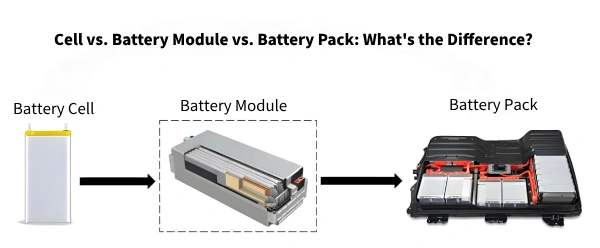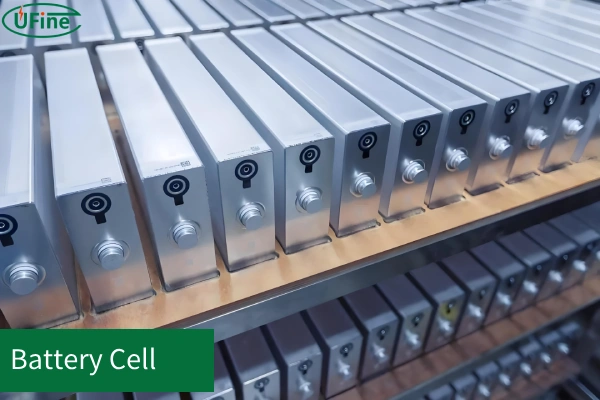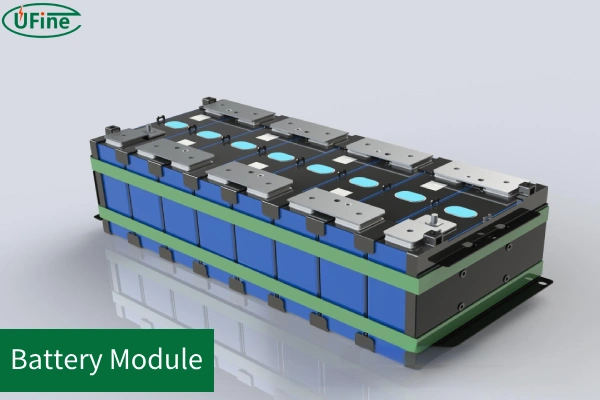Have you ever wondered what powers electric vehicles, renewable energy systems, and many modern gadgets? It all starts with a battery module. These modules are the building blocks of larger battery systems, providing the necessary energy storage and management for various applications. In this article, we’ll dive deep into what a battery module is, its components, how it differs from other battery configurations, and the steps to assemble a module and a pack. So, let’s get started!
Part 1. What is a battery module?
A battery module is essentially a collection of battery cells organized in a specific arrangement to work together as a single unit. Think of it as a middle layer in the hierarchy of battery systems. While a single battery cell can store and release energy, combining multiple cells into a module increases the overall capacity and power output. This modular approach allows for scalable energy solutions, making it easier to build larger and more powerful battery packs.
Why Battery Modules are Important
Battery modules are crucial because they offer a balance between manageability and capacity. Individual cells are too small to power large devices, while entire battery packs are cumbersome to handle and maintain. Modules, however, strike the right balance, making it easier to design, assemble, and maintain complex energy storage systems.
Part 2. Battery module composition
A battery module comprises several key components, each vital in its functionality and safety. Let’s break down these components and their functions:
Battery Module Key Components:
1. Battery Cells:
The module’s heart consists of individual units that store and release electrical energy. These are the primary energy storage units. They come in various chemistries, each with its advantages and disadvantages.
Battery Management System (BMS): A critical component that monitors and manages the health and performance of the battery cells.
The BMS is like the brain of the module. It ensures that the cells charge and discharge safely, preventing overcharging, over-discharging, and short-circuiting issues.
2. Cooling System:
Ensures that the cells remain at an optimal temperature, preventing overheating.
This system helps dissipate the heat generated during operation. Proper cooling is essential for maintaining the efficiency and longevity of the cells.
3. Electrical Connections:
Wires and connectors that link the cells together and to external circuits. These include busbars and connectors that ensure reliable electrical connections between cells and the external load.
4. Enclosure:
A protective casing that shields the internal components from physical damage and environmental factors.
The enclosure provides structural integrity and protects the cells and other components from external shocks, dust, moisture, and other environmental hazards.
Part 3. Cell vs. battery module vs. battery pack: what’s the difference?
Understanding the differences between a battery cell, module, and pack is crucial for anyone involved in energy storage solutions. These terms are often used interchangeably, but they refer to different levels of complexity and functionality.
1. Battery Cell
The smallest and most basic unit, capable of storing and releasing energy.
These are the foundational units of any battery system. They are typically small and have limited capacity. However, they are versatile and can be used in various applications, from smartphones to small electronic devices.
2. Battery Module
A group of cells combined into a unit to provide more energy and capacity.
By combining multiple cells, a battery module offers greater energy capacity and output. Modules are designed to be manageable in size and complexity, making them easier to integrate into various applications, such as electric vehicles and renewable energy systems. The inclusion of a BMS and cooling system ensures safe and efficient operation.
3. Battery Pack
Multiple modules are assembled to create a more powerful energy storage system.
A battery pack is an assembly of multiple battery modules. This configuration provides a significant boost in energy capacity and power output, suitable for large-scale applications such as electric vehicles, grid storage, and backup power systems. Battery packs are complex and require advanced management and cooling systems to operate safely and efficiently.
Part 4. How to make a battery module from battery cells?
Creating a battery module from individual cells involves a series of meticulous steps. Here’s a detailed guide on how to do it:
Step-by-Step Guide
1. Gather Materials:
- Battery cells
- Battery Management System (BMS)
- Electrical connectors (busbars, wires)
- Cooling components (fans, heat sinks)
- Protective enclosure (plastic or metal casing)
- Tools (soldering iron, multimeter, insulation materials)
2. Test Cells:
- Check the voltage and capacity of each cell to ensure they are within acceptable ranges.
- Match cells with similar capacities to maintain balance within the module.
3. Arrange Cells:
- Design the layout based on the desired configuration (series, parallel, or a combination).
- Place the cells in a holder or frame to keep them organized and secure.
4. Connect Cells:
- Solder or weld the electrical connectors to link the cells according to the chosen configuration.
- Ensure connections are secure and well-insulated to prevent short circuits.
5. Install BMS:
- Attach the BMS to the module, connecting its wires to the appropriate cell terminals.
- The BMS will monitor and manage the cells’ voltage, temperature, and overall health.
6. Add Cooling:
- Implement a cooling system, such as heat sinks or fans, to manage the heat generated during operation.
- Ensure the cooling components are securely attached and positioned for optimal airflow.
7. Enclose the Module:
- Place the assembled module into a protective enclosure.
- Ensure the enclosure is sturdy and adequately protects against physical damage and environmental factors.
8. Test the Module:
- Perform a series of tests to verify the module’s performance and safety.
- Check for proper voltage output, temperature regulation, and overall functionality.
Part 5. How does a battery module make a battery pack?
Once you have a battery module, assemble it into a battery pack. Here’s a step-by-step process to guide you:
Step-by-Step Guide
1. Prepare Modules:
Ensure all battery modules are fully assembled and tested for performance and safety.
2. Design Layout:
- Plan the arrangement of the modules within the pack. Consider space, cooling, and wiring requirements.
- Use a design that balances the load and maximizes efficiency.
3. Connect Modules:
- Use electrical connectors to link the modules, following the desired series or parallel configuration.
- Ensure connections are secure and insulated to prevent electrical hazards.
4. Install BMS:
- Attach a comprehensive BMS to manage the entire battery pack.
- The BMS will monitor the performance of each module and ensure balanced charging and discharging.
5. Add Cooling System:
- Implement an advanced cooling system to maintain optimal temperatures across the pack.
- Use fans, heat sinks, or liquid cooling systems to manage heat dissipation.
6. Enclose the Pack:
- Secure the assembled modules in a robust enclosure. The enclosure should be durable and protect against physical impacts, dust, and moisture.
- Ensure the enclosure allows for adequate ventilation or integration of the cooling system.
7. Perform Final Tests:
- Conduct thorough testing of the battery pack to ensure it operates safely and efficiently.
- Check for proper voltage output, temperature regulation, and overall functionality.
- Perform stress tests to verify the pack’s performance under various conditions.
Part 6. Conclusion
Battery modules are the building blocks of modern battery systems. They combine individual cells into manageable units, providing enhanced energy capacity and safety features. Understanding the composition and assembly of battery modules and packs is essential for anyone involved in energy storage solutions. Whether you’re powering an electric vehicle, a renewable energy system, or any other high-demand application, knowing how to create and use battery modules will help you maximize efficiency and safety. So, next time you’re working on a battery project, remember these insights to build a reliable and powerful energy storage system.
관련 태그:
더 많은 기사

The Ultimate Guide to Remove Battery Corrosion
Learn how to remove battery corrosion, prevent future damage, and maintain battery health with our detailed guide.
How to Properly Discard Batteries and Protect the Environment?
Batteries power daily essentials but improper disposal poses risks. Learn to discard them responsibly for sustainable living and environmental protection.
Battery Manufacturing Process: A Comprehensive Guide
The battery manufacturing process creates reliable energy storage units from raw materials, covering material selection, assembly, and testing.
5 Creative Ways to Battery Organiser: Say Goodbye to Clutter
Tired of searching for the right battery? Discover five creative ways to organize batteries and keep your home clutter-free with this efficient storage guide.
Everything You Need to Know About 3.7v Battery
Discover the ins and outs of 3.7V batteries, including types, capacities, and applications. Learn how to choose the best one for your needs.






